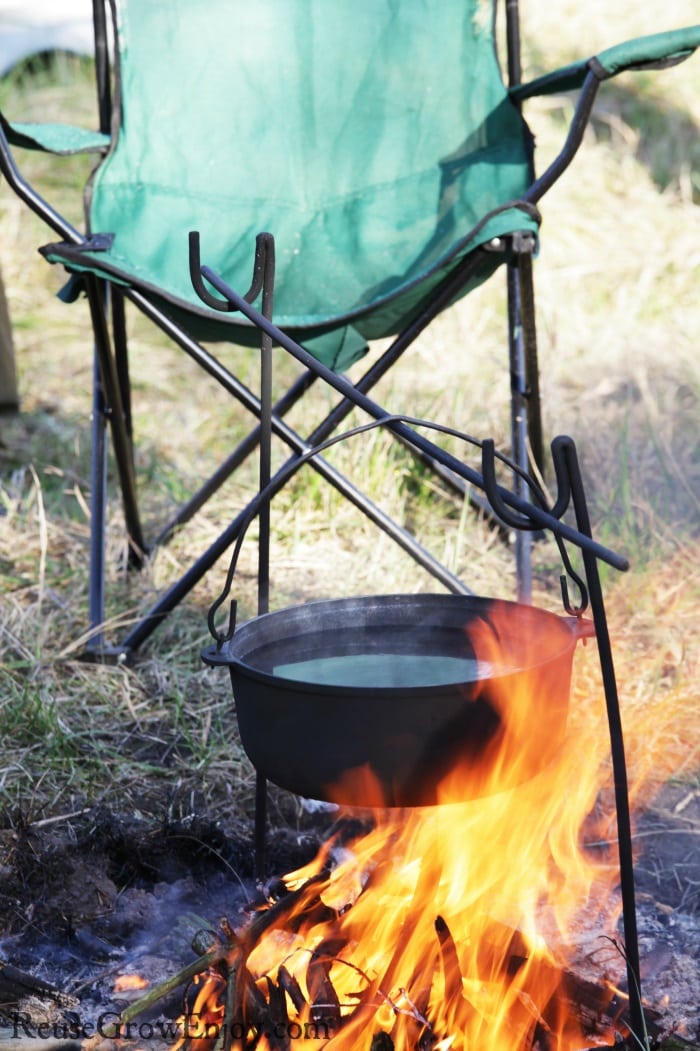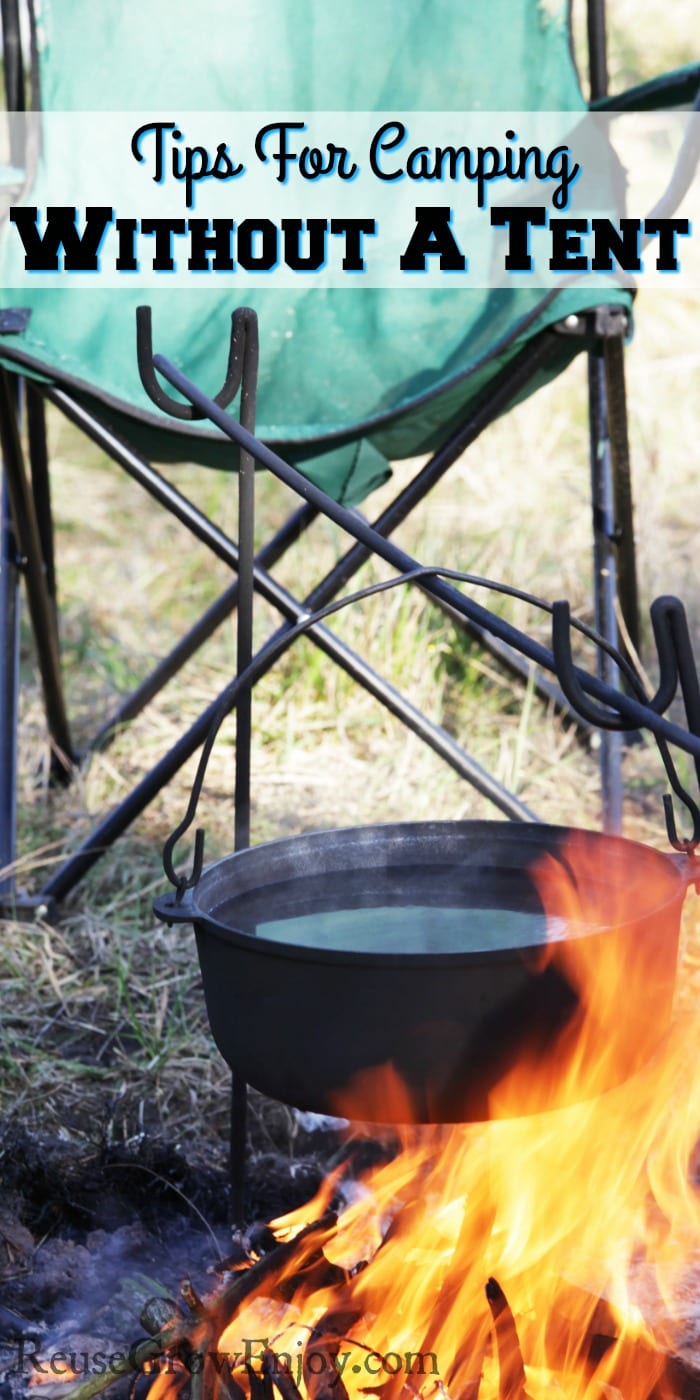Wanting to go camping but don’t have a tent? Did you know you can go camping without a tent? I will go over a few tips to help you out.

Tips For Camping Without A Tent
I tell you what you should know before your first night outdoors and which equipment is useful. Regardless of whether it’s a forest or meadow – with a few little tips, you will experience a successful trip camping without a tent.
If you are looking for other camping tips, here are a few posts to check out.
1.) If you want to sleep outside in nature, you usually don’t stay on a classic campsite, so you should first familiarize yourself with the applicable provisions on wild camping.
The regulations are different from country to country and often also from state to state. Regardless of whether it is a forest or meadow – you can play it safe if you ask the owner for permission.
You can also relax wonderfully in a hammock. To make it easier for you to get started, there are compact sets that you can compress to a manageable size to fit well in your backpack. In some models, even the mosquito net is conveniently integrated like this one.
2.) The place you chose to sleep should be easily and safely accessible on foot. Make sure you always know how to get back home or to the car.
Popular picnic, swimming, or barbecue areas sometimes turn into party centers at night. Check in advance whether you can expect a quiet night’s sleep at your choice.
Due to the dampness, you should not camp directly by a river, stream, or in the middle of a meadow.
3.) Basically, the less equipment, the greater the adventure. For the first night in the open air, a sleeping mat and a sleeping bag make sense in any case.
To protect the sleeping mat, and make the place a little more comfortable, a picnic blanket is also worthwhile as a base. Alternatively, a fabric tarpaulin also protects the sleeping mat from damage.
Depending on the sleeping bag and where you sleep, you may still need weather protection. Down sleeping bags without moisture protection can lose their insulating properties if there is high condensation.
In this case, a waterproof bivy sack makes sense. With synthetic fiber sleeping bags and impregnated down sleeping bags, this is unnecessary in dry and warm conditions. Basically, you can, of course, sleep outside without a sleeping bag. A mat is always useful when spending the night in nature.
Temperatures, Campfires & Pests:
4.) Temperatures drop at night – especially in the mountains. It would be best if you also kept this in mind when looking at your clothing. A fleece jacket or insulation jacket and long trousers ensure comfort in the evening.
5.) Campfires are not allowed everywhere and not all the time. Therefore, it is important to inquire about the applicable regulations and the current risk of forest fires in advance. Do not do this if making fire has been banned due to drought.
6.) Little pests can be a problem. Mosquitoes love moisture and are particularly common near bodies of water, swamps, and puddles.
A light wind keeps the pests away, and they are less common in dry coniferous forests. A small fire also helps, which should burn all night.
It is also worthwhile to watch out for ants when choosing a storage place to avoid any conflicts with the colony.
Now that you have learned a few tips for camping without a tent, do you think you will give it a try?



Leave a Reply